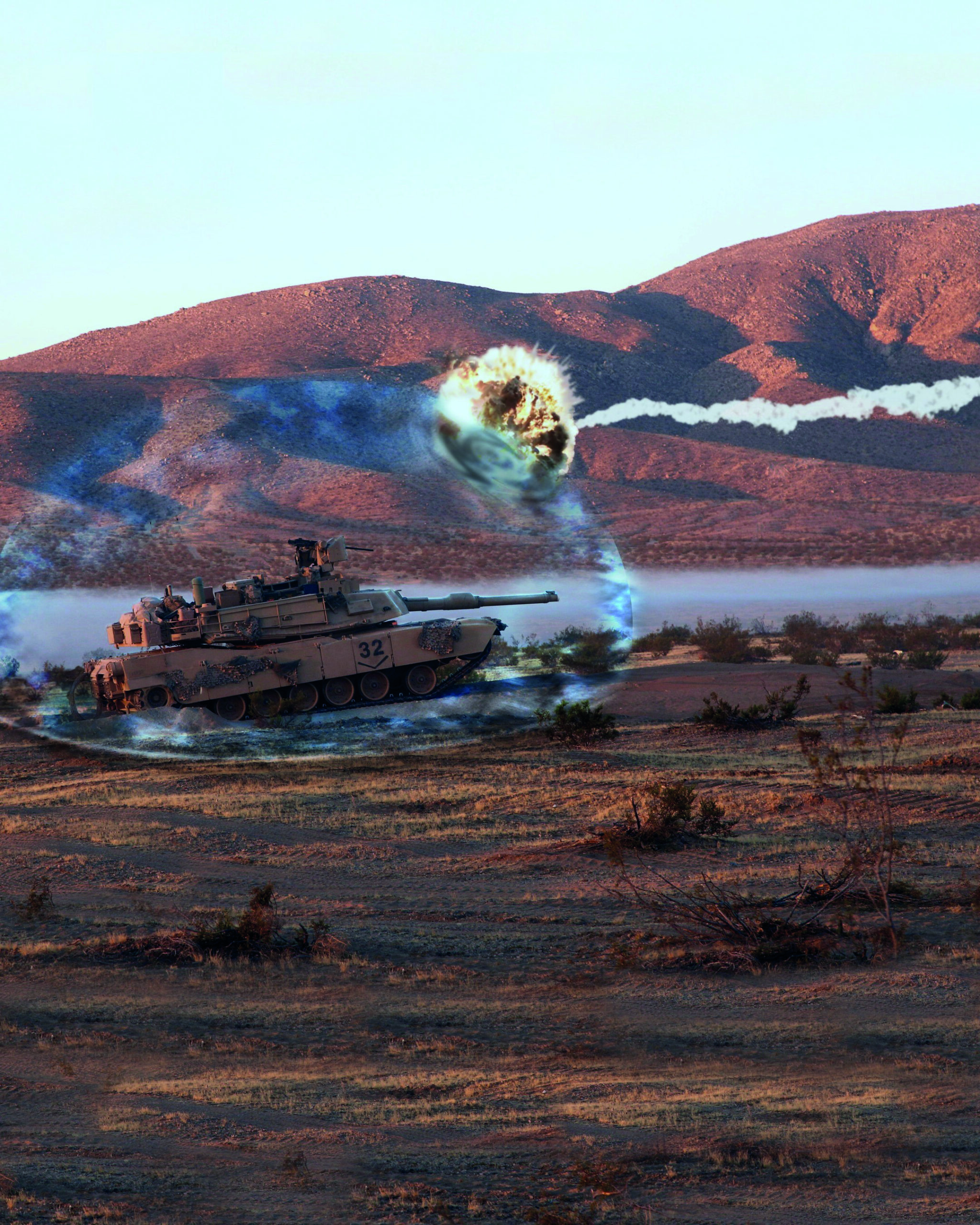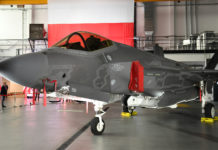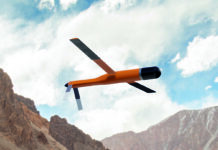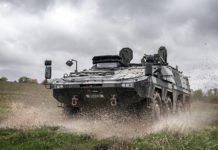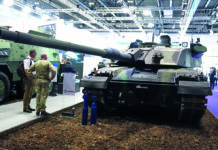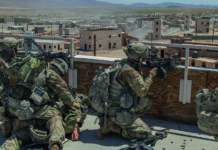The urban landscape poses the most challenging environment for combat, requiring the attacker to commit large forces to operate in a relatively small area, effectively defended by a small group of warfighters.
The complex urban environment forces the attacker to use heavy firepower that often causes significant collateral damage, with considerable loss of life. It also creates obstacles that hinder movement, and leaves complete neighborhoods in ruins. Since winning an urban battle often means total annihilation of the enemy, it requires encircling and seizing entire cities, causing massive displacement of inhabitants and unacceptable civilian losses; that is why many conflicts of this nature have ended with the surrender of the enemy if this could be achieved.
Growing Prominence
As such battles often result in the destruction of cities and heavy losses in personnel and materiel, it is no wonder armies have tried to avoid such battles if possible. However, as the urban environment offers significant benefits for the defender, armies are increasingly drawn into fighting in cities, as we have witnessed recently with many examples where major urban battles have been fought between regular forces and militias. Aleppo, Ghouta, Deir ez-Zor, Raqqa and Kobani, in Syria, Ramadi, Fallujah, Mosul, and Tal Afar in Iraq, Debal’tseve and Ilovaisk in Ukraine, the Gaza strip, Marawi in the Philippines and Shusha, Nagorno Karabakh are just a few examples from recent years.
Some of these battles were fought with the same methods as in the First and Second World Wars. Others employed modern technologies to some degree, but these were not sufficient to transform the battles from the fire-heavy ground centred campaigns into combined-arms, multi-dimensional warfare.
“Urban warfare has its own rules. In large-scale combat operations to liberate an enemy city today, those are rules that most if not all militaries have allowed to remain in place since World War II,“ John Spencer of the Modern War Institute wrote in an excellent assay entitled “The Eight Rules Of Urban Warfare And Why We Must Work To Change Them”. He describes eight rules that define urban warfare.
“These rules give great advantages to a defending force and make it an attractive option for militaries, insurgents, and terrorists who are weaker than their opponents. Until these game rules are changed, through a major change in tactics, technology, or weapons, the tendency of comparatively weaker actors seeking refuge and advantage in cities – and the damage caused in their liberation – will only continue.” This article highlights some of the weapons and capabilities that could drive such change.
Rule #1: The Urban Defender has the Advantage
When the defender lays out a well-planned defensive plan, he has the advantage in the element of surprise, manoeuvrability and the relative protection afforded by buildings, rubble and access to subterranean paths built under the city. However, the defending forces are scattered into small groups, meaning that concentrating forces for counterattacks is difficult and, therefore, relies mainly on reinforcements.
Modern weapons that may prove useful for defenders in urban combat scenarios include precision-guided weapons with Non-Line-of-Sight (NLOS) guidance capability, particularly mortars that often use a high-trajectory to hit the enemy in narrow streets and behind buildings. Long-range precision-guided weapons can also deliver effective support fire from a distance, to assist small groups of defenders that remain to defend a city. Both sides can make great use of Vertical Take Off and Landing (VTOL) drones, for intelligence gathering, surveillance, and attack. For the forces on the receiving end, denying such capabilities means using self-protection means for early warning and electronic combat, primarily GNSS jammers and other means of electronic attack.
Another element is the use of psychological warfare that currently focuses on the use of the internet, harnessing mass communications and social media aired live by reporters and ordinary people. In this way, the defenders try to gain support for their cause.. Live recordings of combat events caught on camera or deliberately staged to achieve the desired effect are often used, while the attackers’ leverage the same means by conducting overt or deceptive moves and actions to demoralise the enemy and bring about their surrender without any fighting taking place.
Rule #2: Lack of Intelligence, Surveillance, and Reconnaissance Hinder the Attackers’ Ability to Engage at Distance.
Modern Persistence Surveillance capabilities using UAVs or aircraft carrying ultra-high-resolution cameras with a wide field of view offer continuous scanning of large areas. This offers the ability to investigate events by tracking them back in time, thereby locating the perpetrator(s). Such techniques also leverage communications intelligence that can map the relationship and connection between combat elements using cellular or radio communications. Locations identified by COMINT can be further investigated by leveraging small tactical UAVs or other intelligence gathering assets, to assess target behaviour, extract intelligence, and determine the identity for an attack. Also, during the actual attack, where they leverage Artificial Intelligence (AI) to automatically detect, classify and identify targets enabling a detailed situational awareness or Terrain Dominance capabilities. Such automatic target recognition abilities may be used to support loitering weapons that can remain over the combat zone for extended times, enabling the elimination of each target immediately.
Rule #3: The Defender Can See and Engage the Attacker, because the Attacker has Limited Cover and Concealment
The attacker may use robotic means to spearhead their movement into contact. These elements can be autonomous or remotely controlled and may use advanced sensors or be weaponised, acting as combat recon. Such robotic platforms may also operate small VTOL drones, to obtain a multi-dimensional view of the area. By using weaponised drones or loitering weapons, the enemy can be spotted and immediately engaged on rooftops or inside buildings, using small drones capable of conducting operations indoors.
Manned combat formations operating in armoured fighting vehicles may also leverage autonomy and robotics with Optionally Manned Combat Vehicles (OMFV). These vehicles can be operated as unmanned platforms, moving into a suspected kill zone, perform obstacle clearing or even spearhead a column of vehicles, thus avoiding heavy loss of iife. Another layer of defence is the Active Protection System (APS) that provides highly effective defence against the types of close-range anti-tank rockets and long-range missiles which vehicles often encounter in urban warfare. Other means of self-protection are counter-UAS (C-UAS) systems defending the combat units from loitering weapons and drones. These measures should deny the enemy the use of drones, by detecting their existence, and defeating such targets by electronic means that can disable an individual drone or a small group of drones, acting as ‘soft-kill’ measures. C-UAS may also use kinetic means as ‘hard kill’, eliminating them one by one using drone interceptors, lasers, explosive grenades, or precision fired projectiles to destroy drones.
Rule #4: Buildings Serve
as Fortified Bunkers
Specialised warheads are designed to penetrate walls, roofs or multiple storeys in a high rise, and kill individuals inside buildings once considered to be safe. Different techniques are used, from thermobaric weapons that create a lethal overpressure, programmable explosive grenades, or projectiles, designed to slice through windows or walls and explode inside a room, or delay-fused aerial bombs that can penetrate through the roof and count the number of floors and explode at the exact room designated for the attack. To eliminate collateral damage, some of these weapons use warheads with ‘scalable effects’, enabling mission planners to focus the effect within a small area, leaving the neighbouring rooms or buildings intact.
Rule #5: Attackers Must Use Explosive Force to Penetrate Buildings
Through-Wall Sensors such as Ultra-Wide-Band (UWB) Radar and hyperspectral sensors are used to locate and track a human presence in buildings before an assault. Autonomous systems, including flying drones, legged, wheeled and tracked robots are introduced today with multiple sensing capabilities. They can be driven by an operator using augmented reality, to precede the human lead element, and provide early warning before entering a potential lethal funnel. Others may use AI to carry out a complete mapping and clearance of building interiors or subterranean paths, before any human steps in. Some can be weaponised to deal with adversaries indoors immediately upon detection.
Rule #6: The Defender Maintains Relative Freedom of Manoeuvre within the Urban Environment
Advanced mapping tools that can model a large urban terrain in near real time provide valuable tools for operational planning, assessment and targeting for attacks by guided weapons. The use of such models also helps prevent blue-on-blue incidents and enables effective operations of forces without common line of sight. Using a shared Battle Management Network harnesses all weapons in range to join the fight and engage the target, using the most effective means of attack. Such a network centric operation delivers decisive strikes at multiple targets and has the potential to quickly force the enemy off balance.
Rule #7: The Underground Serves as the Defender’s Refuge
Seismic mapping, hyperspectral sensing and autonomous robotic vehicles can be effective in mapping subterranean pathways, providing forces with advance warning of potential dangers. Persistent surveillance with AI may also offer an overwatch capability protecting friendly forces on the move or in buildings, thus avoiding surprise by the enemy moving out of subterranean hideouts and tunnels.
Rule #8: Neither the Attacker nor the Defender can Concentrate their Forces Against the Other.
The integration of intelligence and surveillance assets, small manned and unmanned combat formations on land and in the air, and NLOS weapons capable of providing effective support fire from a distance, enable a quick concentration of a massive fire, without having to commit a large footprint on the ground.
Summary
While this is only a partial list of all available capabilities to support urban warfare, it nevertheless shows the potential of modern technology to change and transform warfare in general and, specifically, urban warfare, providing modern armies with the tools and capabilities to defend and seize cities, by focusing maximum pressure on the enemy, while minimising collateral damage to the population.
A modern approach to urban warfare considers a multi-dimensional manoeuvre warfare that leverages technology to outmatch the opponent. Theoretically, this concept may lead to the defeat of small groups of defenders, with minimal collateral damage to the city’s livelihood and infrastructure.



